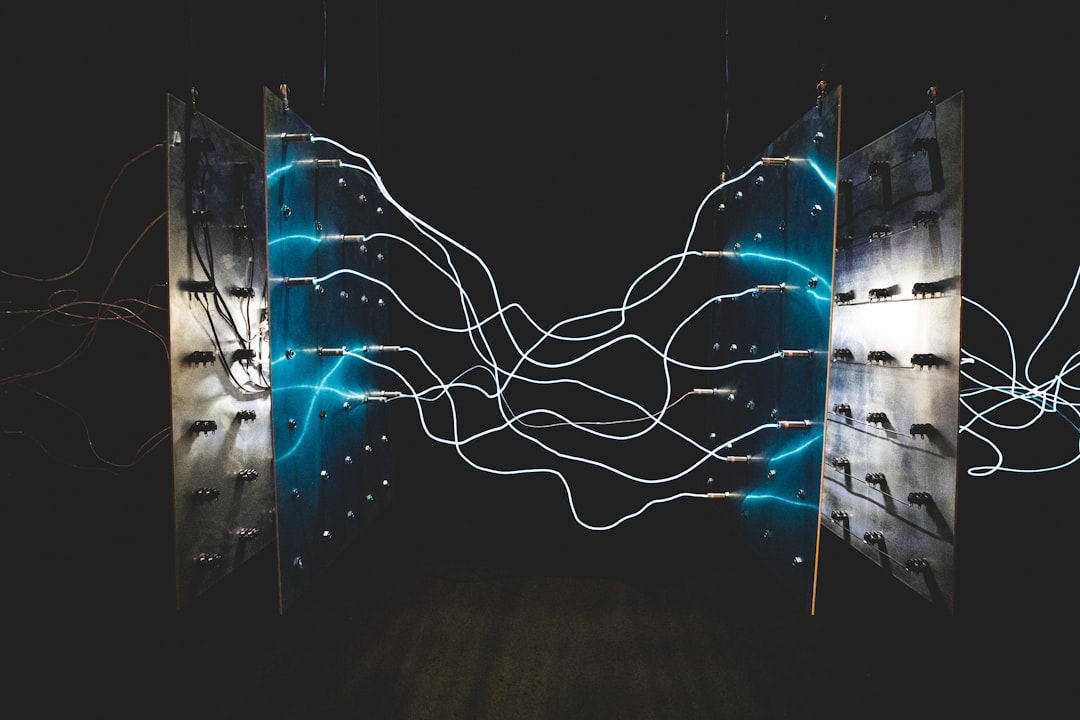What is it about?
Photocatalytic degradation is considered to be a promising approach for treating water contamination caused by industrialization. Hence, an eco-friendly photocatalyst with high efficiency is needed. Bismuth oxychloride (BiOCl) and Zr-doped BiOCl (ZBCl) with enhanced visible light-induced photocatalytic activities were prepared through a simple co-precipitation method at ambient conditions. The synthesized materials were characterized using XRD, FT-IR, Raman, UV-Vis DRS, PL, TEM, HRTEM, and BET analysis. Photocatalytic studies showed that ZBCl possesses higher photocatalytic activity for the degradation of rhodamine B under visible light irradiation in comparison to BiOCl. Among the synthesized materials, the 1% ZBCl exhibited the highest photocatalytic efficiency. The 1% ZBCl was able to degrade 97.7% of RhB dye within 60 min. Additionally, the linear sweep voltammetry (LSV) and electrochemical impedance spectroscopy (EIS) studies showed enhanced response under visible light irradiation in comparison to dark conditions which is caused by a decrease in electron transfer resistance and an increase in photocurrent. This research suggests that ZBCl can be used successfully as a photocatalyst and as a photoelectrode material due to its enhanced photocatalytic and photoelectrochemical response.
Featured Image

Photo by Alexander Grey on Unsplash
Why is it important?
Photocatalytic degradation is considered to be a promising approach for treating water contamination caused by industrialization. Hence, an eco-friendly photocatalyst with high efficiency is needed. Bismuth oxychloride (BiOCl) and Zr-doped BiOCl (ZBCl) with enhanced visible light-induced photocatalytic activities were prepared through a simple co-precipitation method at ambient conditions. The synthesized materials were characterized using XRD, FT-IR, Raman, UV-Vis DRS, PL, TEM, HRTEM, and BET analysis. Photocatalytic studies showed that ZBCl possesses higher photocatalytic activity for the degradation of rhodamine B under visible light irradiation in comparison to BiOCl. Among the synthesized materials, the 1% ZBCl exhibited the highest photocatalytic efficiency. The 1% ZBCl was able to degrade 97.7% of RhB dye within 60 min. Additionally, the linear sweep voltammetry (LSV) and electrochemical impedance spectroscopy (EIS) studies showed enhanced response under visible light irradiation in comparison to dark conditions which is caused by a decrease in electron transfer resistance and an increase in photocurrent. This research suggests that ZBCl can be used successfully as a photocatalyst and as a photoelectrode material due to its enhanced photocatalytic and photoelectrochemical response.
Perspectives
Photocatalytic degradation is considered to be a promising approach for treating water contamination caused by industrialization. Hence, an eco-friendly photocatalyst with high efficiency is needed. Bismuth oxychloride (BiOCl) and Zr-doped BiOCl (ZBCl) with enhanced visible light-induced photocatalytic activities were prepared through a simple co-precipitation method at ambient conditions. The synthesized materials were characterized using XRD, FT-IR, Raman, UV-Vis DRS, PL, TEM, HRTEM, and BET analysis. Photocatalytic studies showed that ZBCl possesses higher photocatalytic activity for the degradation of rhodamine B under visible light irradiation in comparison to BiOCl. Among the synthesized materials, the 1% ZBCl exhibited the highest photocatalytic efficiency. The 1% ZBCl was able to degrade 97.7% of RhB dye within 60 min. Additionally, the linear sweep voltammetry (LSV) and electrochemical impedance spectroscopy (EIS) studies showed enhanced response under visible light irradiation in comparison to dark conditions which is caused by a decrease in electron transfer resistance and an increase in photocurrent. This research suggests that ZBCl can be used successfully as a photocatalyst and as a photoelectrode material due to its enhanced photocatalytic and photoelectrochemical response.
Professor Mohammad Mansoob Khan
Universiti Brunei Darussalam
Read the Original
This page is a summary of: Zirconium-doped BiOCl for enhanced visible light-induced photocatalytic degradation of RhB dye and photoelectrochemical studies, New Journal of Chemistry, January 2023, Royal Society of Chemistry,
DOI: 10.1039/d3nj02294c.
You can read the full text:
Resources
Zirconium-doped BiOCl for enhanced visible light-induced photocatalytic degradation of RhB dye and photoelectrochemical studies
Photocatalytic degradation is considered to be a promising approach for treating water contamination caused by industrialization. Hence, an eco-friendly photocatalyst with high efficiency is needed. Bismuth oxychloride (BiOCl) and Zr-doped BiOCl (ZBCl) with enhanced visible light-induced photocatalytic activities were prepared through a simple co-precipitation method at ambient conditions. The synthesized materials were characterized using XRD, FT-IR, Raman, UV-Vis DRS, PL, TEM, HRTEM, and BET analysis. Photocatalytic studies showed that ZBCl possesses higher photocatalytic activity for the degradation of rhodamine B under visible light irradiation in comparison to BiOCl. Among the synthesized materials, the 1% ZBCl exhibited the highest photocatalytic efficiency. The 1% ZBCl was able to degrade 97.7% of RhB dye within 60 min. Additionally, the linear sweep voltammetry (LSV) and electrochemical impedance spectroscopy (EIS) studies showed enhanced response under visible light irradiation in comparison to dark conditions which is caused by a decrease in electron transfer resistance and an increase in photocurrent. This research suggests that ZBCl can be used successfully as a photocatalyst and as a photoelectrode material due to its enhanced photocatalytic and photoelectrochemical response.
Zirconium-doped BiOCl for enhanced visible light-induced photocatalytic degradation of RhB dye and photoelectrochemical studies
Photocatalytic degradation is considered to be a promising approach for treating water contamination caused by industrialization. Hence, an eco-friendly photocatalyst with high efficiency is needed. Bismuth oxychloride (BiOCl) and Zr-doped BiOCl (ZBCl) with enhanced visible light-induced photocatalytic activities were prepared through a simple co-precipitation method at ambient conditions. The synthesized materials were characterized using XRD, FT-IR, Raman, UV-Vis DRS, PL, TEM, HRTEM, and BET analysis. Photocatalytic studies showed that ZBCl possesses higher photocatalytic activity for the degradation of rhodamine B under visible light irradiation in comparison to BiOCl. Among the synthesized materials, the 1% ZBCl exhibited the highest photocatalytic efficiency. The 1% ZBCl was able to degrade 97.7% of RhB dye within 60 min. Additionally, the linear sweep voltammetry (LSV) and electrochemical impedance spectroscopy (EIS) studies showed enhanced response under visible light irradiation in comparison to dark conditions which is caused by a decrease in electron transfer resistance and an increase in photocurrent. This research suggests that ZBCl can be used successfully as a photocatalyst and as a photoelectrode material due to its enhanced photocatalytic and photoelectrochemical response.
Contributors
The following have contributed to this page










